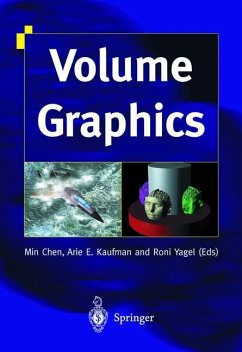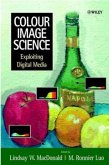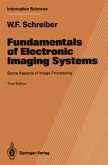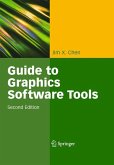Dieses Lehrbuch ist eine moderne Einführung in die Informatik für das Grundstudium an Universitäten und Fachhochschulen. Der Autor stellt die Prinzipien der "Systemmodellierung" und der "ingenieurmäßigen Softwarekonstruktion" in den Mittelpunkt seiner Darstellung. In vier Bänden deckt dieses Werk die Informatik-Grundvorlesung bis zum Vordiplom ab. Der nun in dritter Auflage vorliegende erste Band bietet den Einstieg in den Vorlesungszyklus und vermittelt die Grundbegriffe, mit denen die Informatik umgeht und die theoretischen Grundlagen (Algebren, Relationen, Logikgrundlagen, funktionales Programmieren, abstrakte Datentypen), die benötigt werden, um das systematische Konstruieren von Informatiksystemen zu erlernen.
Min Chen, Arie E. Kaufman and Roni Yage/ Volume graphics is concerned with graphics scenes defined in volume data types, where a model is specified by a mass of points instead of a collection of surfaces. The underlying mathematical definition of such a model is a set of scalar fields, which define the geometrical and physical properties of every point in three dimensional space. As true 3D representations, volume data types possess more descriptive power than surface data types, and are morphologically closer to many high-level modelling schemes in traditional surface graphics such as parametric surfaces, implicit surfaces and volume sweeping. The past decade has witnessed significant advances in volume visualisation, driven mainly by applications such as medical imaging and scientific computation. The work in this field has produced a number of volume rendering methods that enable 3D information in a volumetric dataset to be selectively rendered into 2D images. With modern computer hardware, such a process can easily be performed on an ordinary workstation. More importantly, volume-based rendering offers a consistent solution to the primary deficiencies of the traditional surface-based rendering, which include its inability to encapsulate the internal description of a model, and the difficulties in rendering amorphous phenomena. The emergence of volume-based techniques has not only broadened the extent of graphics applications, but also brought computer graphics closer to other scientific and engineering disciplines, including image processing, computer vision, finite element analysis and rapid prototyping.
Min Chen, Arie E. Kaufman and Roni Yage/ Volume graphics is concerned with graphics scenes defined in volume data types, where a model is specified by a mass of points instead of a collection of surfaces. The underlying mathematical definition of such a model is a set of scalar fields, which define the geometrical and physical properties of every point in three dimensional space. As true 3D representations, volume data types possess more descriptive power than surface data types, and are morphologically closer to many high-level modelling schemes in traditional surface graphics such as parametric surfaces, implicit surfaces and volume sweeping. The past decade has witnessed significant advances in volume visualisation, driven mainly by applications such as medical imaging and scientific computation. The work in this field has produced a number of volume rendering methods that enable 3D information in a volumetric dataset to be selectively rendered into 2D images. With modern computer hardware, such a process can easily be performed on an ordinary workstation. More importantly, volume-based rendering offers a consistent solution to the primary deficiencies of the traditional surface-based rendering, which include its inability to encapsulate the internal description of a model, and the difficulties in rendering amorphous phenomena. The emergence of volume-based techniques has not only broadened the extent of graphics applications, but also brought computer graphics closer to other scientific and engineering disciplines, including image processing, computer vision, finite element analysis and rapid prototyping.








